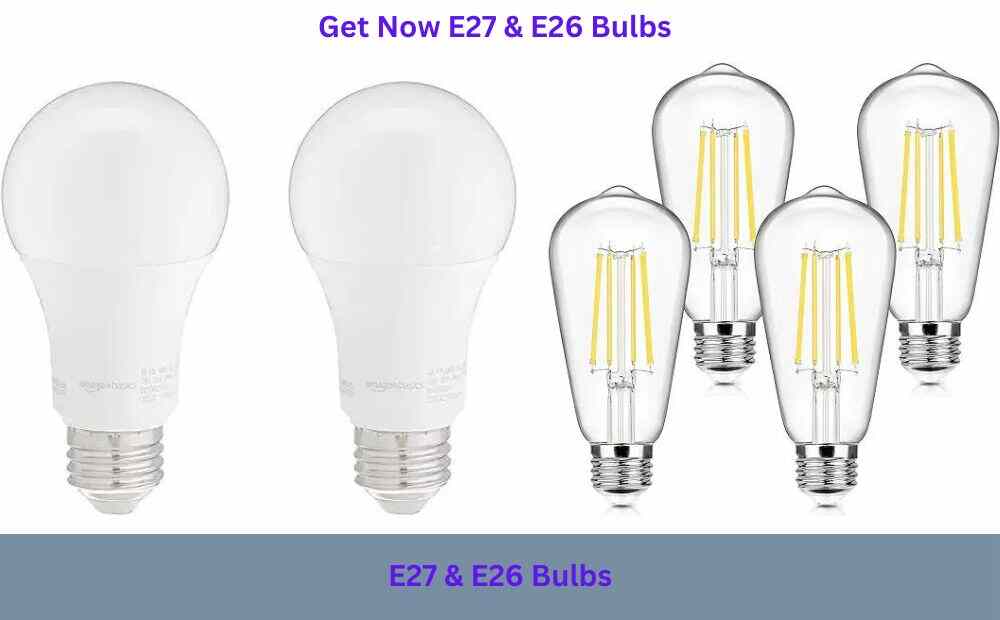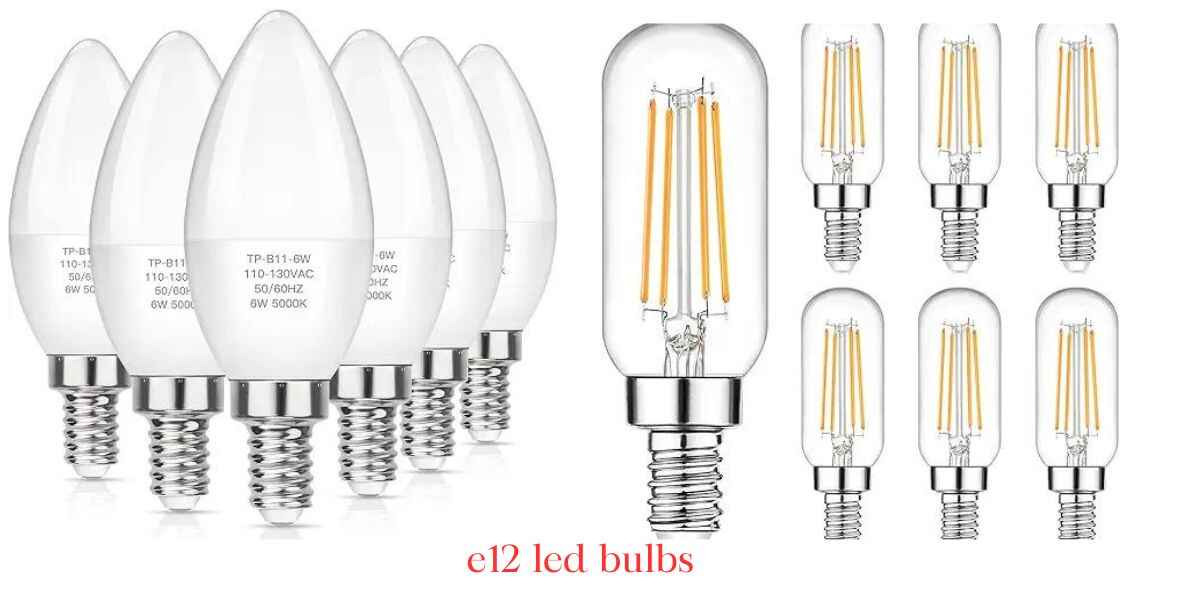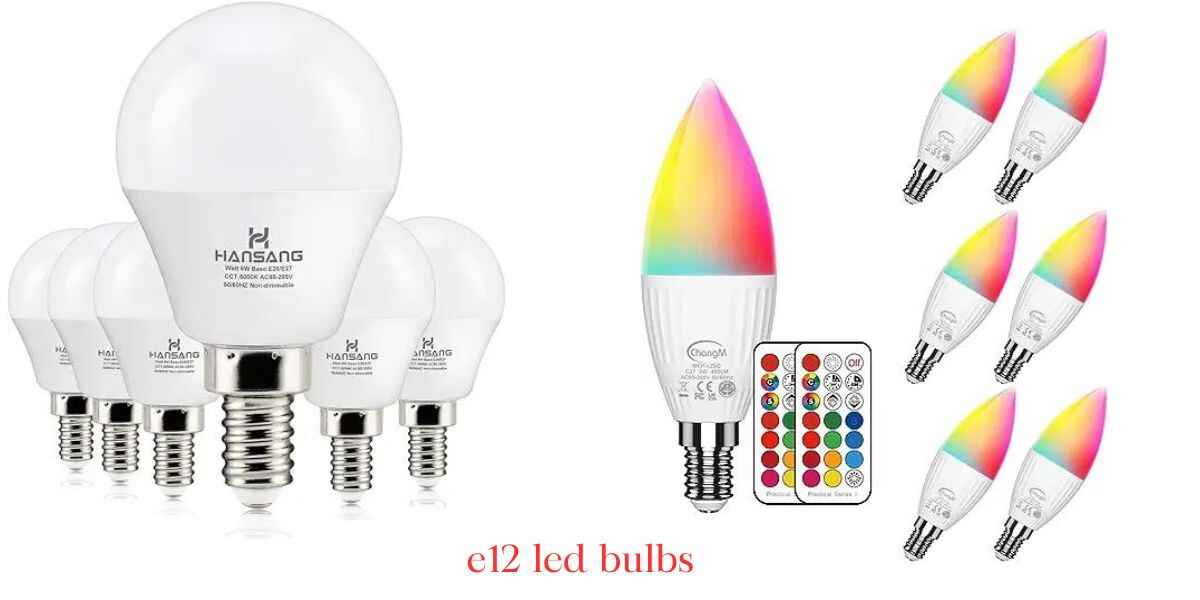When it comes to know the distinctions between different types of light bulbs, it will help you make time and cost-effective decisions when selecting the proper one. The most popular bulbs in homes and businesses are e26 vs e27 vs e12 bulb. This post will go into great depth about each kind to assist you in choosing wisely.

What Are E26, E27, and E12 Bulbs?
The size of the light bulb’s base or socket is indicated by the numbers E26, E27, and E12. This code is a component of a uniform system designed to guarantee interoperability with lighting equipment. The initial “E” represents Edison, which is named after Thomas Edison, the man who created the first widely used incandescent lightbulb. The base’s diameter in millimeters is indicated by the numbers.
1. E26 Bulbs
2. E27 Bulbs
3. E12 Bulbs
Let’s explore each type in detail.
What is an E26 Bulb?
In North America, E26 bulbs are primarily utilized. The base diameter of 26 millimeters is indicated by the “26” in E26. These bulbs are frequently used in ceiling chandeliers, floor lamps, and other general lighting applications since they fit conventional screw-in sockets.
Common Uses
- Household Lighting: Ideal for kitchens, living areas, and bedrooms.
- Ceiling Fixtures: Frequently utilized in chandeliers and pendant lights.
- Lamps: Ideal for table lamps and floor lamps.
Types of E26 Bulbs
- Incandescent Bulbs: Traditional but less energy-efficient.
- LED Bulbs: Energy-efficient and long-lasting.
- CFL Bulbs: Compact fluorescent lamps that are a bit more efficient than incandescents.
Pros and Cons
- Pros: Versatile, readily available, and compatible with many fixtures.
- Cons: LED options can be more expensive upfront, though they save money in the long run.
What is an E27 Bulb?
Although they are more popular in Europe and other regions of the world, E27 bulbs are extremely similar to E26 bulbs. A base diameter of 27 millimeters is indicated by the “27” in E27. For the majority of lighting fixtures outside of North America, these bulbs are the industry standard.
Common Uses
- Household Lighting: Used in living rooms, bedrooms, and kitchens in Europe and Asia.
- Outdoor Fixtures: Suitable for garden lights and outdoor lamps.
- Ceiling Fixtures: Commonly found in European-style chandeliers and pendant lights.
Types of E27 Bulbs
- Incandescent Bulbs: Standard bulbs, not very energy-efficient.
- LED Bulbs: Energy-saving, with a longer lifespan.
- CFL Bulbs: More energy-efficient than incandescent, but not as much as LEDs.
Pros and Cons
- Pros: Widely used in many countries, versatile, and compatible with various fixtures.
- Cons: Not interchangeable with E26 without an adapter.

What is an E12 Bulb?
The base of an E12 bulb is smaller, measuring 12 millimeters in diameter. These bulbs, which are also called “candelabra” bases, are frequently found in ornamental lighting fixtures.
Common Uses
- Chandeliers: Ideal for decorative chandeliers.
- Wall Sconces: Often used in decorative wall lighting.
- Ceiling Fans: Suitable for light kits in ceiling fans.
- Holiday Lights: Common in string lights and other holiday decorations.
Types of E12 Bulbs
- Incandescent Bulbs: Traditional, with a warm light.
- LED Bulbs: Energy-efficient and available in various colors and styles.
- CFL Bulbs: Less common but available in some markets.
Pros and Cons
- Pros: Great for decorative purposes, available in various styles.
- Cons: Not suitable for general lighting due to lower light output.
E26 vs E27 vs E12 Bulbs
Base Size and Compatibility
- E26 and E27: Both can frequently be used interchangeably with the right fixtures and have bases that are comparable in size (26 and 27 mm, respectively). They are, nevertheless, peculiar to two regions: E26 in North America and E27 in Europe.
- E12: Much smaller base, specifically for decorative fixtures.
Voltage and Wattage
- E26 and E27: Similar wattages and voltages—typically 110–120V in North America and 220-240V in Europe—can be handled by these bulbs.
- E12: Lower wattage bulbs are frequently utilized in systems with 12 or 24 volts of electricity.
Light Output and Applications
- E26 and E27: Ideal for general illumination, offering enough of light in bigger areas.
- E12: Ideal for accent or accent lighting; not recommended for lighting big spaces.
Energy Efficiency
LED Options: The most energy-efficient versions are available for all three bases and are LED-based. Compared to incandescent and CFL bulbs, they have longer lifespans and use less ene
How to Choose the Right Bulb
Consider Your Fixture
Ensure that you are aware of the fixture’s socket size. To find out if your light fixture demands E26, E27, or E12, check the label or manual. An inadequate fit or electrical problems may arise from using the incorrect base size.
Assess Your Lighting Needs
- General Lighting: For rooms needing bright light, E26 or E27 bulbs are ideal.
- Decorative Lighting: For mood or accent lighting, E12 bulbs are perfect.
Think About Energy Efficiency
Whenever possible, choose LED light bulbs. Although they may initially cost more, they will save you money on energy costs and outlast CFL or incandescent lights.
Check for Voltage Compatibility
Make sure the voltage of the lightbulb is the same as the standard in your area (110–120V in North America, 220-240V in Europe). This is particularly crucial if you’re traveling or buying bulbs online.
Look at the Lumens
Lumens are used to quantify light bulb brightness. Brighter light has a higher lumen count. When selecting the lumens, take the lighting’s intended use into account.

Additional Tips for Optimal Lighting
Dimming Capabilities
Verify whether the lightbulb can be dimmed if you require changeable lighting.
Color Temperature
Choose the right color temperature for your space.
- Warm White (2700K-3000K):Ideal for living rooms and bedrooms, this color creates a warm, inviting environment.
- Cool White (3500K-4100K): Provides bright, clear light, ideal for kitchens and workspaces.
- Daylight (5000K-6500K): Mimics natural daylight, perfect for reading or detail-oriented tasks.
Fixture Design
Consider the design of your fixture. For open fixtures, you can choose bulbs with decorative filaments or unique shapes. For covered fixtures, focus on lumens and color temperature.
Conclusion: E26 vs E27 vs E12 bulbs
The key to selecting between E26, E27, and E12 bulbs is to be aware of the illumination requirements and fixture requirements. In many places, E26 and E27 bulbs are commonly used for general lighting due to their versatility. Because of their thinner bases, E12 bulbs are ideal for decorative lighting.
When choosing your bulbs, don’t forget to take voltage compatibility, brightness, and energy economy into account. You can make an informed choice and guarantee that your lighting is both aesthetically beautiful and functional with the appropriate knowledge.
When it’s feasible, use LED lighting to save money and promote sustainability. There’s a light bulb for every need, be it lighting a beautiful chandelier, a bright kitchen, or a comfortable living area. Cheers to happy lighting!


